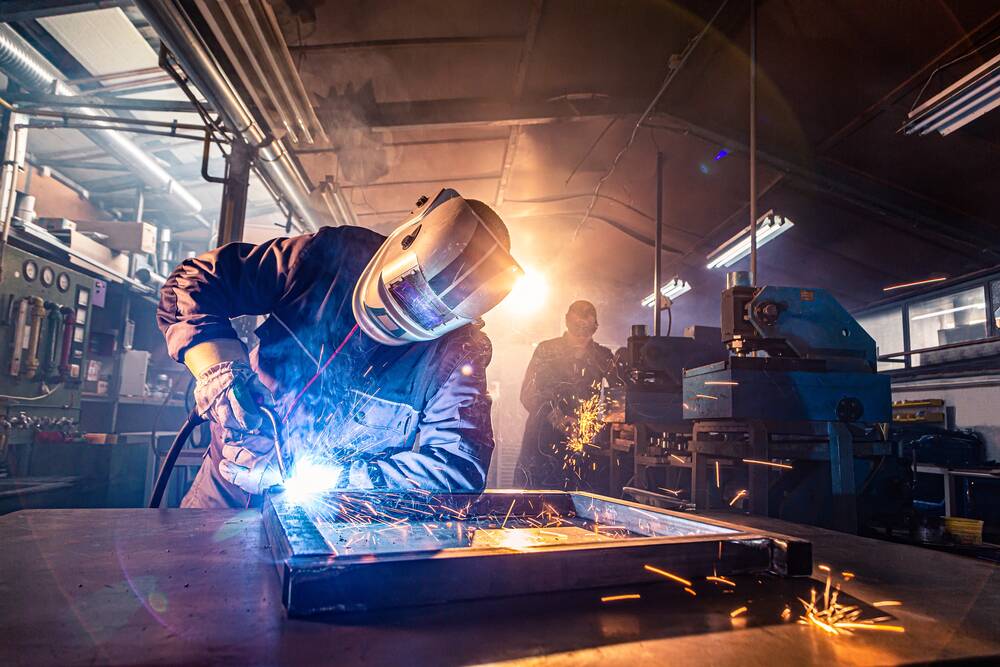Six practical maintenance tips for long-lasting welding equipment


Unplanned welding equipment failures not only disrupt your projects but also erode your operational efficiency. Consider the distinct scenarios of having to replace a torch and hose versus a contact tip. Replacing a torch is not only a costly affair but also demands significant downtime-often tempting operators to commission full repairs on components that may only require minor fixes.
On the flip side, a contact tip is a low-cost, consumable item that can be quickly switched out, minimising work stoppage. A savvy welder who keeps spare contact tips on hand can resume work in virtually no time. Regardless of your equipment inventory, investing in regular maintenance is a strategic move that ensures the longevity of your welding apparatus and consistent production flow.
For instance, if you have just purchased Lincoln welding equipment, you would want to make sure that it serves you for an extended period before considering a replacement. To achieve this, consider the following practical maintenance tips:
Empower welders with equipment maintenance
Entrusting welders with the upkeep of their equipment can significantly improve the longevity and performance of the machinery. By taking ownership, welders are more likely to:
- Promptly replace worn contact tips, liners, and other consumable components.
- Develop a sense of responsibility and meticulous care for the welding machines they operate.
This proactive approach requires minimal additional effort from the individual welder but can contribute enormously to the extended service life and reliability of your equipment.
Prioritise liner cleanliness for optimal performance
Liner maintenance is crucial for seamless welding operations. Accumulating grime and metal shavings can compromise the liner's interior, leading to erratic wire feeding and unstable arc characteristics. Providing regular liner cleaning sessions is not only prudent but beneficial for numerous reasons:
- Utilising compressed air makes the task of expelling debris from the liner both straightforward and effective.
- Avoiding over-tightening of the feed roller system is essential; excessive pressure can exacerbate liner wear and contribute to arc instability.
By adhering to these practices, welders can ensure the liner's durability and maintain consistent weld quality without unnecessary replacement costs.
Opt for prudent contact tip replacement
Mitigating equipment downtime is often a result of making informed decisions about repairs. A common oversight in welder management is opting to replace the entire torch when only the contact tip has worn out. However, a more cost-effective approach involves:
- Recognising the contact tip as a disposable element that can be easily substituted without a major overhaul.
- Training crew members on the importance of identifying worn components and executing timely replacements.
By focusing on quick and economical fixes like switching out contact tips, you maintain workflow continuity and avoid the unnecessary expenditure of torch replacements.
Evaluate cooling methods for enhanced ROI and equipment longevity
As we delve into the cost-efficiency of welding operations, it becomes essential to acknowledge the impact of adequate cooling systems on the Return on Investment (ROI). The type of cooling incorporated into your welding processes can mitigate the risks associated with prolonged, high-amperage welding that often leads to equipment overheating and, consecutively, accelerated wear and tear.
- Opt for air-cooling solutions when the welding demands involve lower amperages and shorter operational spans. Air-cooled systems, while not as efficient in thermal management as their water-cooled counterparts, can provide sufficient cooling for mitigating heat buildup during lighter welding tasks.
- Invest in water-cooled systems for intensive welding projects where high amperage and long-duration welds are commonplace. Water-cooling's superior ability to dissipate heat will protect critical components such as the torch, hose assembly, contact tips, and liners from the detrimental effects of excessive temperatures.
By aligning the cooling mechanisms with the specific requirements of the welding operation, not only is the service life of welding equipment prolonged, but also the overall resource allocation optimised, thereby enhancing the company's ROI through strategic equipment usage and maintenance.
Regularly update welding machine software for peak efficiency
In the age of technological advancement, even welding equipment benefits from timely software updates, ensuring machinery stays at the forefront of efficiency and performance.
Modern welding machines are integrated with software that governs their operation, and these programs periodically receive updates to enhance functionality. Keeping your welding equipment's software up-to-date is an effortless yet powerful method to safeguard your investment. Here's why you should prioritise software updates:
- Performance boost: Software updates often encompass optimisations that enhance the machine's speed, precision, and user-friendliness. This continuous improvement ensures that your equipment is in tune with the latest technological advances.
- Maintenance and longevity: Regular updates contribute to the overall health and maintenance of the welding machine, preserving its condition and extending longevity.
- Easy to implement: Updating your welding machine's software is a simple process. You just have to download the latest version from the manufacturer's website and follow their instructions for installation. With minimal effort, you can maximise your equipment's capabilities.
These updates are integral to maintaining the competitive edge of your welding operations, with virtually no additional cost and minimal effort.
Leverage service agreements for optimal equipment health
A service agreement with an Authorised Service Partner is a strategic investment to keep your welding equipment in peak condition. These agreements encompass regular maintenance checks and necessary software updates, proactively preventing equipment failure and extending operational life. Consider the advantages:
- Annual validation & maintenance: Most welding apparatus require yearly validation, an ideal time for comprehensive service check-ups, ensuring your machine meets industry standards and operates efficiently.
- Minimise unexpected downtime: Routine maintenance significantly lowers the likelihood of unforeseen mishaps, thereby reducing costly downtime and keeping your projects on schedule.
- Potential warranty extension: Regularly serviced equipment may qualify for an extended warranty period, offering additional security and peace of mind for your business investments.
Through a service agreement, you not only safeguard your machinery but also optimise its performance and reliability in the long term.


